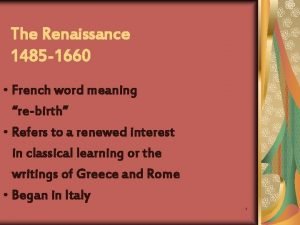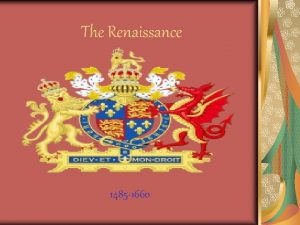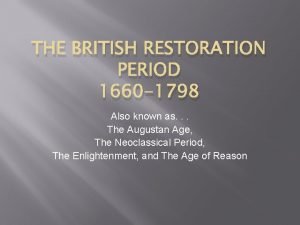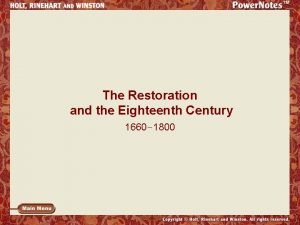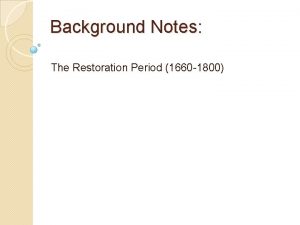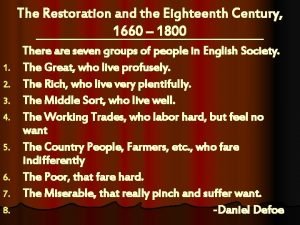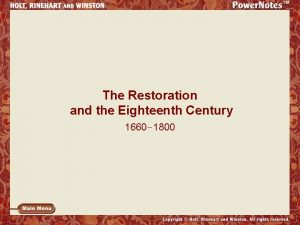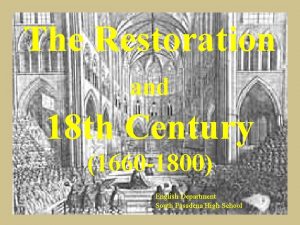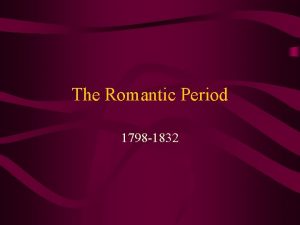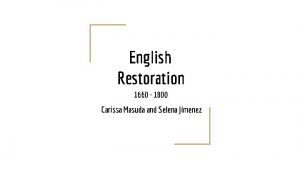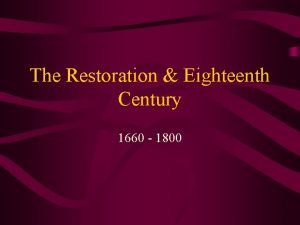The Restoration 1660 1800 Catalyst Charles IIs Restoration









- Slides: 9

The Restoration 1660 -1800

Catalyst Charles II’s Restoration to the throne marked the end of civil war and strict Puritan rule Shortly after, the plague and the Great Fire struck London England was ripe for a period of stability that cherished order, decorum, and clarity At the same time, many were leaving England flocking to America in search of religious freedom

Language Compared to French, English was considered barbaric More and more women became literate (It’s the End of the World as We Know It…)

Religion/Philosophy See timeline for important events pertaining to Catholicism/Protestantism The Age of Reason/Enlightenment—people began to value the scientific process and investigation over mere faith Scientific method was used to explain natural phenomena Deism emerges (the “Clockmaker” God) However, Christianity remained influential Religion determined politics

Literature A new profession emerged, Journalism, which not only exposed social and political events but sought improvement in society (similar to satire) Writers valued thrift, prudence, industry, and respectability (aka Middle Class Values) Satirists were appalled by the ugliness beneath the surface of the rich Novels (“something new”) were developed for the middle class Theaters were reopened after being closed by Puritans Neo-Classicism (an extension of Humanism from the Renaissance) inspired many writers to model their works after Latin classics

Societal Structure Questions about the divine right of nobility, criticism of upper class Expansion of the middle class Poor lived in deplorable conditions—no education, medicine, police—lived in fear of debtor’s prisons

Women The Good: Women produced works of philosophy, literature, and art Women were allowed to act on stage Higher rate of literacy A woman introduced the smallpox vaccine to England (Mary Wortley Montagu) Women became missionaries, pioneers, and educators

Women, cont. The Bad: Marriage did not equal love but an increase in social status Could not draw up a will without permission from one’s husband Not allowed in public unless in fancy dress Behavior not natural, always stately and dignified in public

Women, cont. The Ugly (methaphorically and sometimes literally): Upper class women were devoted to extravagant fashion inspired by the French Dresses were often made of silk, hoopskirts were made of whalebone, petticoats were lined with silver, clothes were decorated with jewels, flowers, or ribbons Wore fake beauty marks Wore huge headdresses (sometimes 2 -3 feet high) (the bigger the wig, the more money one had) In general, it was a careless, pleasure-seeking time.






